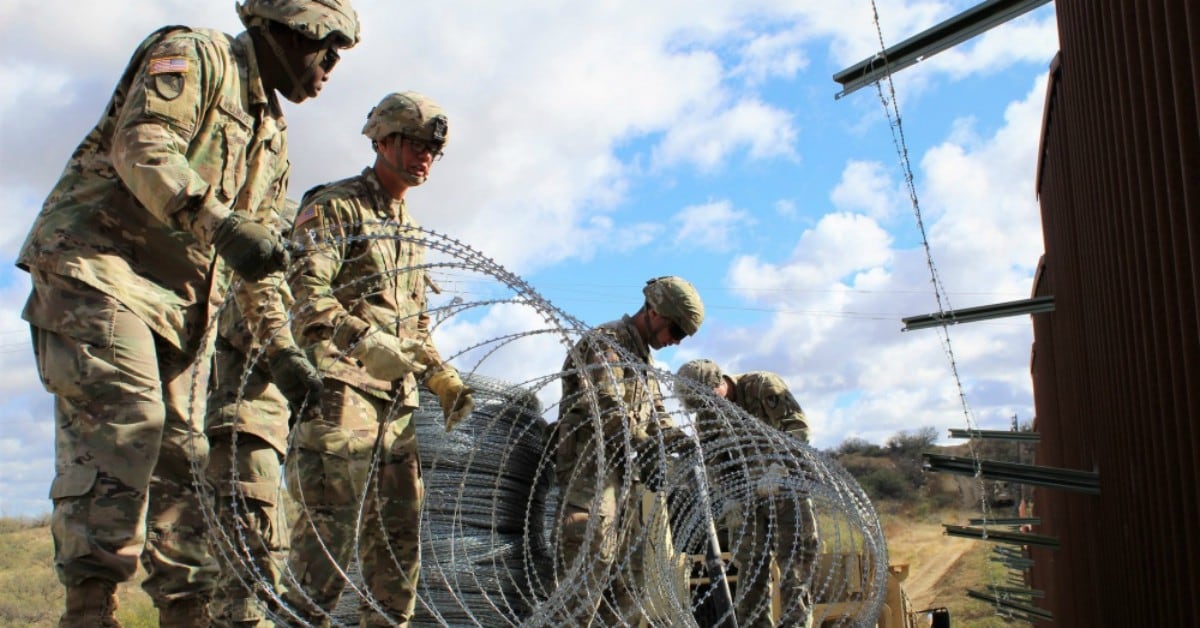The Pentagon has asked Department of Homeland Security to identify locations where border wall construction would improve the “effectiveness" of military troops deployed there, a key justification required to redirect military construction spending that would otherwise go to local base projects.
In a memo, dated Feb. 18, DoD asked DHS to identify “priorities for potential construction,” a U.S. official familiar with the memo’s contents told Military Times. Acting Defense Secretary Patrick Shanahan is asking for a priority list, as well as the data used to generate that priority list, to help him determine “what projects we support” and what could be delayed, the official said.
The Pentagon is looking at how it could spend military construction funds, or MILCON, to comply with President Donald Trump’s declaration of a national emergency last week. Shanahan has not received a response yet from DHS, the official said.
RELATED

Shanahan told reporters Thursday afternoon that Pentagon officials would be going to Capitol Hill Friday to brief Congress “on the way forward and to give people a sense of not just the activities we are going to undertake but [also] the timing."
House Democrats have voiced strong opposition to the emergency declaration. In a letter to party members this week, House Speaker Nancy Pelosi, D-Calif., said the president’s decision to move the military funding “goes outside the bounds of the law to try to get what he failed to achieve in the constitutional legislative process.”
Some Republicans, too, have raised objections. On Feb. 16., the top Republican on the House Armed Services Subcommittee on Strategic Forces, Rep. Mike Turner, acknowledged there are portions of the border where migrants are crossing unimpeded, but said Trump still needs to make a case to Congress that the situation on the border constitutes a national emergency.
“It is not a national emergency just because Nancy Pelosi says no,” Turner said. “If the president declares this a national emergency and begins to take funds that have been validly appropriated for other security issues without the debate in Congress, without the approval of Congress, then Congress’s authority has been usurped.”
The use of military construction funds is a political hot button. Most of those projects are the result of military communities’ elected officials lobbying — sometimes for years — for new buildings, gyms and housing that are viewed as critical quality-of-life projects. They are also sometimes seen as insulation against base closure. That same funding also supports operational needs, such as the construction of new aircraft hangars.
For example, if MILCON is tapped, some of the potential projects that could be targeted include: a new vehicle maintenance shop at Camp Arifjan in Kuwait, dry-dock repairs at Joint Base Pearl Harbor-Hickam in Hawaii, F-35 hangar improvements at Luke Air Force Base in Arizona, ongoing hospital construction at Landstuhl Regional Medical Center in Germany, and new family housing builds in South Korea, Italy and Wisconsin.
The White House has identified $3.6 billion in military construction funds for DoD to potentially tap, as well as $2.5 billion in drug interdiction funds. Section 2808 of Title 10 of U.S. Code allows military construction funds to be reprogrammed to support other activities, such as Trump’s national emergency declaration, if there is a determination they are “necessary to support the use of the armed forces,” the Pentagon said in a statement.
RELATED

Shanahan said this weekend that he thought it was unlikely that construction funds from military housing projects would be used.
A second U.S official said that the Pentagon was considering using the $2.5 billion in drug interdiction funds first, because it did not require the additional justification, and those funds are more closely aligned with the U.S. military’s current border deployment. However the first U.S. official said even the drug interdiction funds may have limitations, such as the type of barrier they can be used to construct.
Tara Copp is a Pentagon correspondent for the Associated Press. She was previously Pentagon bureau chief for Sightline Media Group.
Leo covers Congress, Veterans Affairs and the White House for Military Times. He has covered Washington, D.C. since 2004, focusing on military personnel and veterans policies. His work has earned numerous honors, including a 2009 Polk award, a 2010 National Headliner Award, the IAVA Leadership in Journalism award and the VFW News Media award.
Joe Gould was the senior Pentagon reporter for Defense News, covering the intersection of national security policy, politics and the defense industry. He had previously served as Congress reporter.





